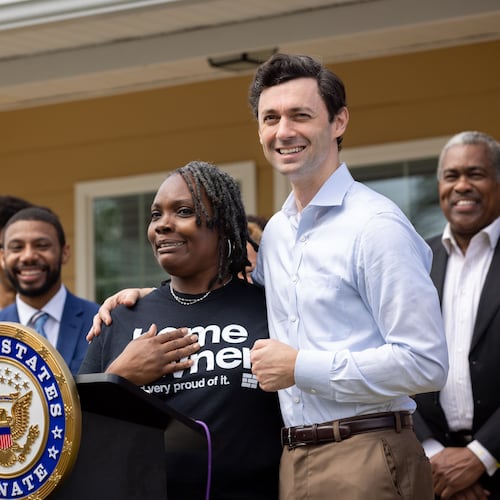A few weeks ago, my wife and I sent the kids to their grandparents’ house and spent a weekend treating Atlanta like tourists. The experience was made all the more authentic by our hotel’s $30-per-night parking fee: Rather than shell out $60, we left the car at home.
We walked some, and we also took MARTA. But on the second night, as we prepared to leave a restaurant at 14th and Peachtree for a show at the Fox, she asked, “Why don’t we just take Uber?”
We use the ride-sharing service often when we don’t want to drive ourselves, usually for trips that aren’t easily taken by MARTA; having lived overseas and depended on public transportation, we’re comfortable taking the train. But there we were, standing a couple of blocks from one MARTA station and going within a block of another, and yet taking the train made no sense.
Our MARTA fares would be $5; the expected charge for Uber-X was $6. We’d be picked up and dropped off where we stood, rather than walking a few blocks away and taking a couple of staircases. We’d get air-conditioning, not the still air of an underground station. It was a no-brainer.
As we rode, I wondered how MARTA could adjust its business model to keep choice riders like ourselves — maybe by charging less for such short trips. But I gradually recognized the real threat ride-sharing services pose to public transportation as a “last mile” option.
For a lone person, the difference between $6 (or more) and MARTA’s $2.50 fare might be too much. But with a second person, you’re close to breaking even. With a third, you probably save money.
For longer trips, MARTA is likely safe. The cost differential is too great — although, one can easily imagine a car-pooling service that allows people to chip in with others nearby to make a longer journey more economical. In any place with enough people to justify mass transit, there are probably enough people heading in a given direction that a ride-sharing app could pool together a few of them at a time for the trip in and different combinations for the ride home, without the same handful of people having to coordinate their schedules every day.
But I digress. This is really about short trips, and the ubiquity of Uber, Lyft and their rivals makes me wonder whether a network of streetcars, like the one Atlanta envisions for itself, could ever compete with them.
The Beltline, which connects places that aren’t already well-linked by roads, still makes sense. But should we really expect a streetcar running along Peachtree to be more attractive than a car you can summon for a personalized trip? Should we spend hundreds of millions of dollars — and take lanes away from automobiles — to find out?
The ride-sharing approach would offer broader coverage and more flexibility than we will ever build out with streetcars. It is even better for low-income riders: Imagine the number of ride-sharing trips that could be subsidized for the money it would take to build, operate and maintain a decent network of streetcars.
As metro Atlanta contemplates ways to improve mobility, let’s recognize the options appearing on their own, without a dime of public money being spent. There are enough needs, and resources are sufficiently limited, that we can’t afford to duplicate any efforts.
About the Author
Keep Reading
The Latest
Featured


